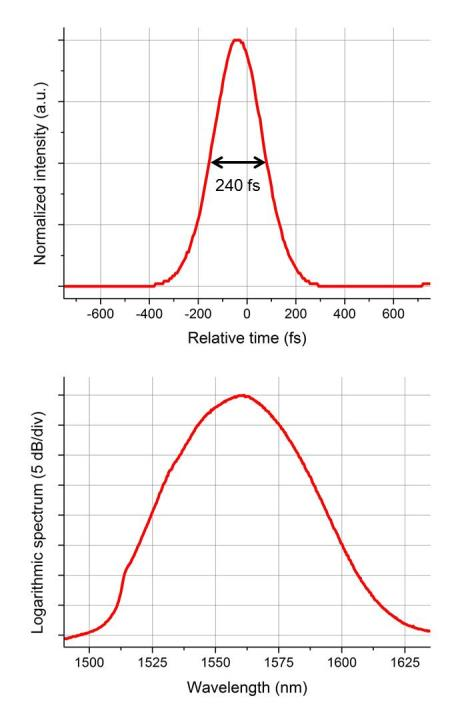CSIC have developed a method that allows to generate pulsed signals of high power and energy
through control over the spatial distribution of the intensity, nonlinear effects and the dispersive
characteristics inside a laser. This method offers interesting possibilities for the processing of laser
materials, the generation of high bandwidth light sources, the development of sensors or optical
metrology, as possible field of application.
Industrial partners from in laser sector are being sought to collaborate through a patent licence
agreement.
An offer for Patent Licensing
Ultra-fast high-power sources of radiation
Autocorrelation trace (a) and optical spectrum (b) of the pulse generated, with peak power >650 kW, pulse energy >150 nJ and 200 kHz repeat frequency Today’s fiber lasers stand out for their stability, simplicity and little need for maintenance, but they are limited in terms of the energy and power they can get, requiring external stages of amplification that make the system more expensive and complicated. The most direct way to increase the energy of an anchored pulse to modes would be to increase the length of the cavity, but in practice this distorts or widens the signal, so never being considered a viable alternative.
The system of the invention uses solitary wave pulses that propagate without deformation to overcome this barrier. It consists of: a signal regulator, an attenuator that allows to adjust the signal strength and a Raman effect amplification device that controls the spatial distribution of the signal, making it possible to transmit long distance without loss.
Main innovations and advantages
· High-power, simple, compact and low-cost ultra-short pulse lasers.
· Exceed the power and energy limits of current systems.
· Allows the generation of pulses with the desired power and energycharacteristics.
· Allows the generation of pulses with different repeat frequencies, as requiredby the application.
· Possible applications: material processing, atmospheric gas sensor,telecommunications or medical tomography…






